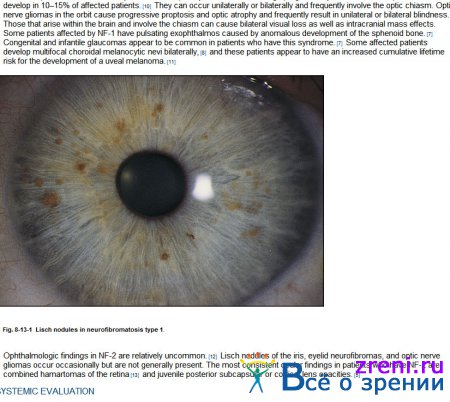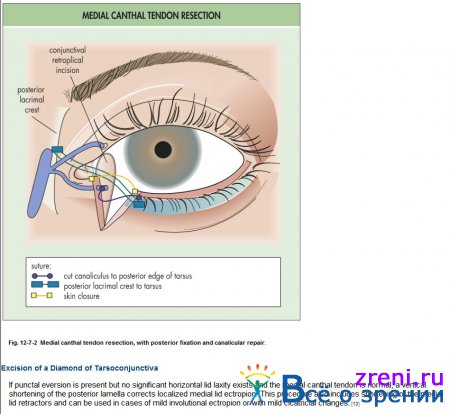Ophthalmology, 3rd ed. | Yanoff & Duker

Год: 2008
Издательство: Mosby
Формат: CHM
Качество: Электронная книга
Количество страниц: 1552
Описание
We published the second edition of Ophthalmology in 2004. Now, only 5 years later, we again find that enormous advances have taken place in ophthalmic technology, genetics, and immunology, along with other areas. We continue to recognize the advantage of a complete textbook of ophthalmology in a single volume, rather than a multivolume textbook. Our major effort has been updating and keeping current the third edition. Towards this end we endeavored to delete old out-of-date material as we added new material. One of the easiest parts of a revision is adding new material; the most difficult part, but essential, is to delete the old, so as to keep the book at approximately the same size. Throughout our revision we have successfully maintained this balancing act, culminating in a finished product that is essentially the same size as the prior edition.
The color coding of the sections in the first and second editions proved highly successful, and we have again used this style in the third edition. We also have carefully integrated the basic visual science with clinical information throughout and have maintained an entire separate section dedicated to genetics and the eye. Once again, we do not intend the third edition of Ophthalmology to be encyclopedic, but strived to make it quite comprehensive.
The book is thoroughly revised. We have discarded out of date material and have added numerous new items. Some examples of new entities include include: Descemet's stripping endothelial keratoplasty (DSEK), a new corneal surgery that is making a huge impact and is a viable option to penetrating keratoplasty; new techniques in ocular surface reconstruction; new techniques in corneal imaging; new information on herpes zoster, peripheral ulcerative keratitis, blepharitis, contact lens related complications, and acid and alkali burns; elaboration of advances in phacoemulsification, increased awareness of the complications of cataract surgery, and combined techniques in management of multiple pathologies following cataract surgery; anti-VEGF treatment for wet age-related macular edema; bevacizumab treatment for complications of diabetic retinopathy; small gauge vitreous surgery.
Tuberculosis is a major disease affecting one-third of the world's population. We have added new discussions of the diagnosis of this entity along with the various manifestations of this disease including ocular changes. Other additions include new information on hereditary optic neuropathies, new advances in molecular biology and genetics in elucidated the pathology of many entities, and optical coherence tomography (OCT) in optic neuritis.
[banner_centerrs] {banner_centerrs} [/banner_centerrs]
Preface to First Edition
Over the past 30 years, enormous technologic advances have occurred in many different areas of medicine—lasers, molecular genetics, and immunology to name a few. This progress has fueled similar advances in almost every aspect of ophthalmic practice. The assimilation and integration of so much new information makes narrower and more focused ophthalmic practices a necessity. As a direct consequence, many subspecialty textbooks with extremely narrow focus are now available, covering every aspect of ophthalmic practice. Concurrently, several excellent multivolume textbooks detailing all aspects of ophthalmic practice have been developed. Yet there remains a need for a complete single-volume textbook of ophthalmology for trainees, non-ophthalmologists, and those general ophthalmologists (and perhaps specialists) who need an update in which they are not expert. Ophthalmology was created to fill this void between the multivolume and narrow subspecialty book.
This book is an entirely new, comprehensive, clinically relevant, single-volume textbook of ophthalmology, with a new approach to content and presentation that allows the reader to access key information quickly. Our approach, from the outset, has been to use templates to maintain a uniform chapter structure throughout the book so that the material is presented in a logical, consistent manner, without repetition. The majority of chapters in the book follow one of three templates: the disease-oriented template, the surgical procedure template, or the diagnostic testing template. Meticulous planning went into the content, sectioning and chaptering of the book, with the aim of presenting ophthalmology as it is practiced rather than as a collection of artificially divided aspects. Thus, pediatric ophthalmology is not in a separate section but is integrated into relevant sections across the book. The basic visual science and clinical information, including systemic manifestations, is integrated throughout, with only two exceptions. We dedicated an entire section to genetics and the eye, in recognition of the increasing importance of genetics in ophthalmology. Optics and refraction are included in a single section as well, because an understanding of these subjects is fundamental to all of ophthalmology.
To achieve the same continuity of presentation in the figures as well as in the text, all of the artworks have been redesigned from the author's originals, maximizing their accessibility for the reader. Each section is color coded for easy cross-referencing and “navigation” through the book. Despite the extensive use of color in artworks and photographs throughout, the cost of this comprehensive book has been kept to a fraction of the multivolume sets. We hope to make this volume more accessible to more practitioners throughout the world.
Although comprehensive, Ophthalmology is not intended to be encyclopedic. In particular, in dealing with surgery, we do not stress specific techniques or describe rarer ones in meticulous detail. The rapidly changing nature of surgical aspects of ophthalmic practice is such that the reader will need to refer to one or more of the plethora of excellent books that cover specific current techniques in depth. We concentrate instead on the areas that are less volatile but nevertheless vital: surgical indications, general principles of surgical technique, and complications. The approach to referencing is parallel to this: for every topic, all the key references are listed, but with the aim of avoiding pages of redundant references where a smaller number of recent classic reviews will suffice. The overall emphasis of Ophthalmology is current information that is relevant to clinical practice superimposed on the broad framework that comprises ophthalmology as a subspecialty.
Essential to the realization of this ambitious project is the ream of Section Editors, each bringing unique insight and expertise to the book. They have coordinated their efforts in shaping the contents list, finding contributors, and editing chapters to produce a book that we hope will make a great contribution to ophthalmology.
We are grateful to the editors and authors who have contributed to Ophthalmology and to the superb, dedicated Ophthalmology team at Mosby.
Myron Yanoff
Jay S. Duker
July 1998
Jay S. Duker
July 1998
Снимки (скриншоты) книги
Купить или скачать книгу
Все файлы на сайте, прежде чем выкладываются, проверяются на вирусы. Поэтому мы даем 100% гарантию чистоты файлов.







Комментариев 0